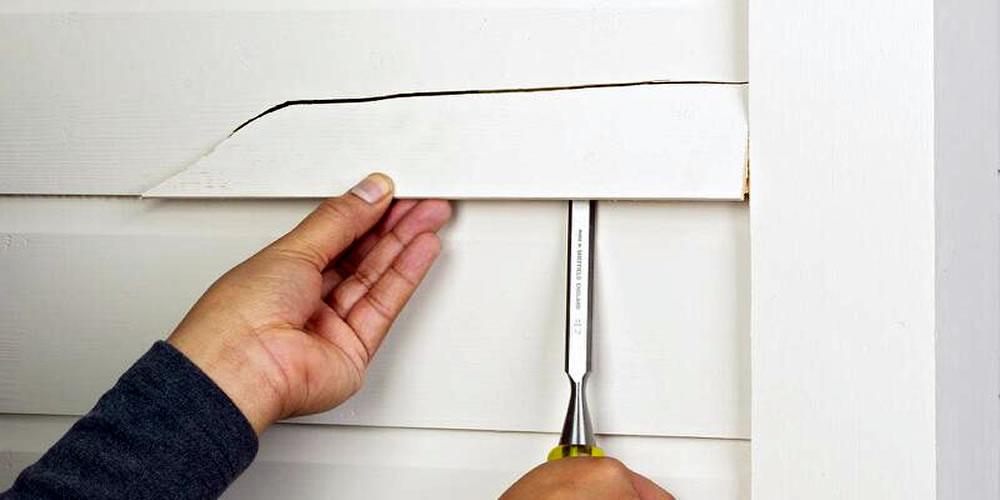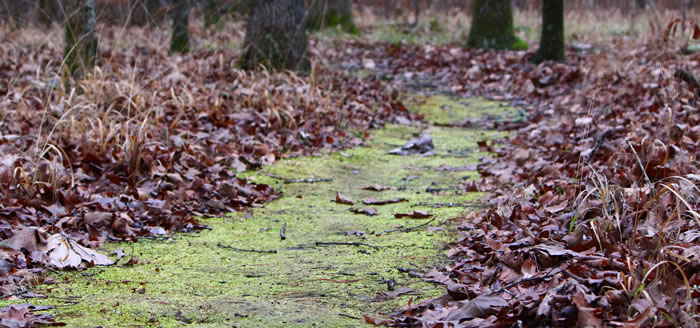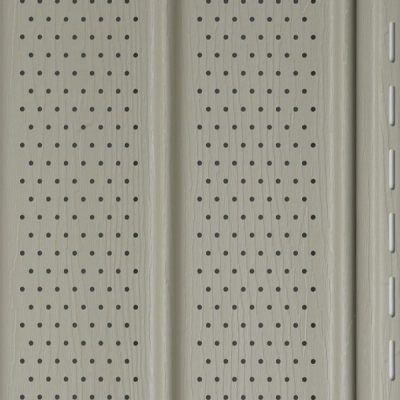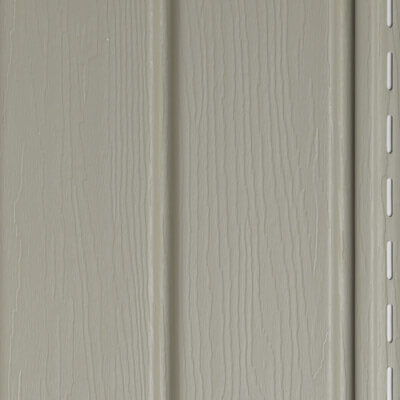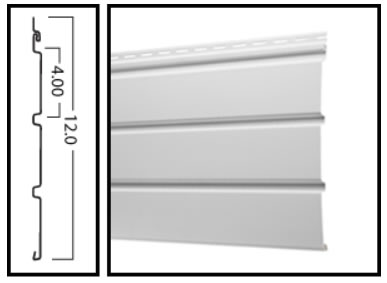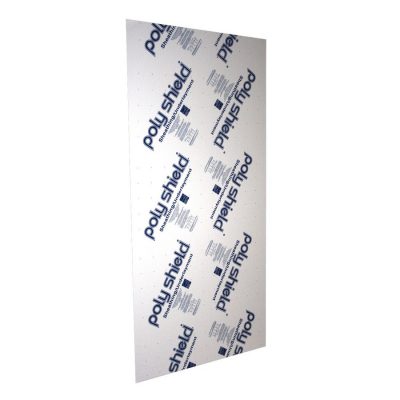Written by Lee Carroll
A hole in vinyl siding opens a door for moisture and insects to intrude. Fortunately, you can repair most small holes and punctures without a professional’s help. You’ll need a tube of color-matched vinyl siding caulk, which you can purchase from siding retailers. Caulk is matched the same way as paint. If the retailer doesn’t have information for your siding on file, take in a small piece of siding to ensure a good match. If the hole is larger than a nail or screw puncture, you’ll also need a scrap of matching siding to use as a patch.
Fill a Puncture
Clean the siding around the hole with vinyl siding cleaner or mild dish detergent and water and a soft sponge. Wipe the siding dry with a rag.
Cut the nozzle tip on a tube of color-matched vinyl siding caulk with a utility knife and fit the caulk into a caulk gun. Cutting the tip at a slight angle gives you more control over application. Prime the caulk tube by squeezing the trigger two or three times, then release the trigger.
Align the caulk tube’s nozzle opening over the hole in the siding.
Squeeze the caulk gun’s trigger to fill the space behind the hole with caulk. This step is important for a long-lasting repair. Squeeze as much caulk through the hole as you can, then slowly lift the nozzle and release the trigger. Overfill the hole slightly, ending with excess caulk outside the hole.
Scrape a plastic card or semi-rigid rubber caulk trimmer lightly across the hole to remove most of the excess caulk. Alternatively, let the caulk harden and then trim off the excess with a utility knife blade.
Patch a Hole or Tear
Clean the siding around the hole with vinyl siding cleaner or dish detergent and water, then dry the siding.
Cut a scrap piece of siding to a length that is several inches longer than the hole. A clean way to cut vinyl siding is to score it with a utility knife and then bend the vinyl at the score. It should snap apart. You can also use utility shears.
Cut off the uppermost edge of the scrap, which has a series of holes for siding nails, with a utility knife. Don’t cut off the whole curved or lipped edge across the top edge of the siding; only cut off the nail hole strip.
Trim off the bottom edge the same way that you trimmed the top, leaving the curved lip. After trimming, you should have a flat section of siding with a curved top and bottom edge.
Press the patch over the damaged section of siding. The curve at the top and bottom of the patch should fit over the same curves on the damaged section of siding. If the patch won’t fit over the damaged section, trim off the curved edges to make a flat patch.
Open a tube of color-matched vinyl siding caulk and fit it into a caulk gun. Squeeze the gun’s trigger a few times to start the flow.
Remove the patch from the wall, and apply a generous amount of color-matched vinyl siding repair caulk on the back of the patch. Don’t worry about using too much, as you can clean up excess caulk after the patch is installed.
Apply a contiguous bead or line of caulk around the hole in the siding.
Set the patch over the damaged siding. Apply pressure to help the pieces stick together, if necessary. Let the sealant dry for as long as the manufacturer recommends, then apply more caulk around the perimeter of the patch, if desired. If you trimmed off the curves and mounted a flat patch, apply painter’s tape across the patch to hold it against the siding until the caulk dries.
Things You Will Need
- Vinyl siding cleaner or dish detergent
- Sponge
- Rag
- Color-matched siding caulk or sealant
- Utility knife
- Caulk gun
- Plastic card or caulk trimmer
- Scrap siding
- Painter’s tape (optional)
Tip
If possible, repair vinyl siding in warm weather when the vinyl is pliable. Vinyl becomes hard and brittle in cold weather.
Warning
Severe damage usually requires total replacement of the bad section, which a vinyl siding installer can complete reasonably quickly. Although vinyl siding interlocks in strips, installers have a special tool that unlocks the seams for easier replacement.
Scraping too much caulk away from a puncture repair can allow the hole to reopen once the caulk dries. Leave some excess on the outside.
Source: http://homeguides.sfgate.com
![]()

